Fantasia is a 1940 American animated film produced by Walt Disney and released by Walt Disney Productions. With story direction by Joe Grant and Dick Huemer, and production supervision by Ben Sharpsteen, it is the third Disney animated feature film. The film consists of eight animated segments set to pieces of classical music conducted by Leopold Stokowski, seven of which are performed by the Philadelphia Orchestra. Music critic and composer Deems Taylor acts as the film's Master of Ceremonies, providing a live-action introduction to each animated segment.
| Fantasia | |
|---|---|
Theatrical release poster | |
| Directed by |
|
| Produced by |
|
| Story by |
|
| Starring |
|
| Narrated by | Deems Taylor |
| Music by | See program |
| Cinematography | James Wong Howe |
Production company | Walt Disney Productions |
| Distributed by |
|
Release date |
|
Running time | 126 minutes |
| Country | United States |
| Language | English |
| Budget | $2.28 million |
| Box office | $76.4–$83.3 million |
Disney settled on the film's concept as work neared completion on The Sorcerer's Apprentice, an elaborate Silly Symphonies short designed as a comeback role for Mickey Mouse, who had declined in popularity. As production costs grew higher than what it could earn, Disney decided to include the short in a feature-length film with other segments set to classical pieces. The soundtrack was recorded using multiple audio channels and reproduced with Fantasound, a pioneering sound reproduction system that made Fantasia the first commercial film shown in stereophonic sound.
Fantasia was first released in theatrical roadshow engagements held in thirteen U.S. cities from November 13, 1940. While acclaimed by critics, it was unable to make a profit due to World War II cutting off distribution to the European market, the film's high production costs, and the expense of leasing theatres and installing the Fantasound equipment for the roadshow presentations. The film was subsequently reissued multiple times with its original footage and audio being deleted, modified, or restored in each version. As of 2012, Fantasia has grossed $76.4 million in domestic revenue and is the 23rd highest-grossing film of all time in the U.S. when adjusted for inflation. Fantasia, as a franchise, has grown to include video games, Disneyland attractions, a live concert, and a theatrically released sequel (Fantasia 2000) co-produced by Walt's nephew Roy E. Disney in 1999. Fantasia has grown in reputation over the years and is now widely acclaimed; in 1998 the American Film Institute ranked it as the 58th greatest American film in their 100 Years...100 Movies and the fifth greatest animated film in their 10 Top 10 list.
Screenplay
Fantasia opens with live action scenes of members of an orchestra gathering against a blue background and tuning their instruments in half-light, half-shadow. Master of ceremonies Deems Taylor enters the stage (also in half-light, half-shadow) and introduces the program.
- Toccata and Fugue in D Minor by Johann Sebastian Bach. Live-action shots of the orchestra illuminated in blue and gold, backed by superimposed shadows, fade into abstract patterns. Animated lines, shapes and cloud formations reflect the sound and rhythms of the music.
- Nutcracker Suite by Pyotr Ilyich Tchaikovsky. Selections from the ballet suite underscore scenes depicting the changing of the seasons from summer to autumn to winter. A variety of dances are presented with fairies, fish, flowers, mushrooms, and leaves, including "Dance of the Sugar Plum Fairy", "Chinese Dance", "Arabian Dance", "Russian Dance","Dance of the Flutes" and "Waltz of the Flowers".
- The Sorcerer's Apprentice by Paul Dukas. Based on Goethe's 1797 poem "Der Zauberlehrling". Mickey Mouse, the young apprentice of the sorcerer Yen Sid, attempts some of his master's magic tricks but does not know how to control them.
- Rite of Spring by Igor Stravinsky. A visual history of the Earth's beginnings is depicted to selected sections of the ballet score. The sequence progresses from the planet's formation to the first living creatures, followed by the reign and extinction of the dinosaurs.
- Intermission/Meet the Soundtrack: The orchestra musicians depart and the Fantasia title card is revealed. After the intermission there is a brief jam session of jazz music led by a clarinettist as the orchestra members return. Then a humorously stylized demonstration of how sound is rendered on film is shown. An animated sound track "character", initially a straight white line, changes into different shapes and colors based on the sounds played.
- The Pastoral Symphony by Ludwig van Beethoven. A mythical Greco-Roman world of colorful centaurs and "centaurettes", cupids, fauns and other figures from classical mythology is portrayed to Beethoven's music. A gathering for a festival to honor Bacchus, the god of wine, is interrupted by Zeus, who creates a storm and directs Vulcan to forge lightning bolts for him to throw at the attendees.
- Dance of the Hours by Amilcare Ponchielli. A comic ballet in four sections: Madame Upanova and her ostriches (Morning); Hyacinth Hippo and her servants (Afternoon); Elephanchine and her bubble-blowing elephant troupe (Evening); and Ben Ali Gator and his troop of alligators (Night). The finale finds all of the characters dancing together until their palace collapses.
- Night on Bald Mountain by Modest Mussorgsky and Ave Maria by Franz Schubert. At midnight the devil Chernabog awakes and summons evil spirits and restless souls from their graves to Bald Mountain. The spirits dance and fly through the air until driven back by the sound of an Angelus bell as night fades into dawn. A chorus is heard singing Ave Maria as a line of robed monks is depicted walking with lighted torches through a forest and into the ruins of a cathedral.
Origins
In 1936, Walt Disney felt that the Disney studio's star character Mickey Mouse needed a boost in popularity. He decided to feature the mouse in The Sorcerer's Apprentice, a deluxe cartoon short based on the poem written by Johann Wolfgang von Goethe and set to the orchestral piece by Paul Dukas inspired by the original tale. The concept of matching animation to classical music was used as early as 1928 in Disney's cartoon series, the Silly Symphonies, but he wanted to go beyond the usual slapstick, and produce shorts where "sheer fantasy unfolds ... action controlled by a musical pattern has great charm in the realm of unreality." Upon receiving the rights to use the music by the end of July 1937, Disney considered using a well-known conductor to record the music for added prestige. He happened to meet Leopold Stokowski, conductor of the Philadelphia Orchestra since 1912, at Chasen's restaurant in Hollywood, and talked about his plans for the short. Stokowski recalled that he did "like the music"; was happy to collaborate on the project, and offered to conduct the piece at no cost.
Following their meeting, Disney's New York representative ran into Stokowski on a train headed for the East Coast. In writing to Disney, he reported that Stokowski was "really serious in his offer to do the music for nothing. He had some very interesting ideas on instrumental coloring, which would be perfect for an animation medium". In his excited response dated October 26, 1937, Disney wrote that he felt "all steamed up over the idea of Stokowski working with us ... The union of Stokowski and his music, together with the best of our medium, would be the means of a success and should lead to a new style of motion picture presentation." He had already begun working on a story outline, and wished to use "the finest men ... from color ... down to animators" on the short. The Sorcerer's Apprentice was to be promoted as a "special" and rented to theatres as a unique film, outside of the Mickey Mouse cartoon series.
An agreement signed by Disney and Stokowski on December 16, 1937, allowed the conductor to "select and employ a complete symphony orchestra" for the recording. Disney hired a stage at the Culver Studios in California for the session. It began at midnight on January 9, 1938, and lasted for three hours using eighty-five Hollywood musicians. As production costs of The Sorcerer's Apprentice climbed to $125,000, it became clearer to Disney and his brother Roy, who managed the studio's finances, that the short could never earn such a sum back on its own. Roy wanted his brother to keep any additional costs on the film to a minimum. He said, "because of its very experimental and unprecedented nature ... we have no idea what can be expected from such a production." Ben Sharpsteen, a production supervisor on Fantasia, noted that its budget was three to four times greater than the usual Silly Symphony, but Disney "saw this trouble in the form of an opportunity. This was the birth of a new concept, a group of separate numbers—regardless of their running time—put together in a single presentation. It turned out to be a concert—something novel and of high quality."
Ideas to produce a complete feature film were pursued in February 1938, when inquiries were made to extend Stokowski's contract. In August, Disney asked Stokowski's representative to have him return to the studios to select material for the new film, which was initially titled The Concert Feature. The pair further thought of presenting the film with an on-screen host to introduce each number in the program. Both had heard composer and music critic Deems Taylor provide intermission commentary during radio broadcasts of the New York Philharmonic, and agreed he would be most suitable for the role. Disney did contact Taylor about the project, but by then work on Pinocchio, Bambi, and development on his new Burbank studio kept him too busy to work on the new feature. In a change of plans, Taylor was asked during a call on September 3, 1938, leave to come to the studios as soon as possible. He left New York City for Los Angeles by train two days later for a month's visit.
Development
Taylor arrived at the studio one day after a series of meetings began to select the musical pieces for The Concert Feature. Disney made story writers Joe Grant and Dick Huemer gather a preliminary selection of music and along with Stokowski, Taylor, and the heads of various departments, discussed their ideas. Each meeting was recorded verbatim by stenographers with participants being given a copy of the entire conversation for review. As selections were considered, a recording of the piece was located and played back at the next gathering. Disney did not contribute much to early discussions; he admitted that his knowledge of music was instinctive and untrained.
Request Movie Now
Watch movie Fantasia 1940 Film online on Amazon
Watch movie Fantasia 1940 Film online
Watch The Movie On Prime
Thanedaar Full HD Movie Download

Marte Dam Tak Full HD Movie Download

Michael Madana Kamarajan Full HD Movie Download

Apne Rang Hazar Full HD Movie Download
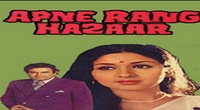
Say Salaam India Full HD Movie Download
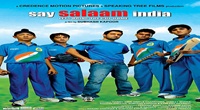
Aag Hi Aag Full HD Movie Download
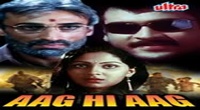
Naukar Full HD Movie Download
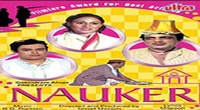
Insaaniyat (1955) Full HD Movie Download
.jpg)
Mera Ghar Mere Bachche (1985) Full HD Movie Download
.jpg)
Apathbhandavudu Full HD Movie Download
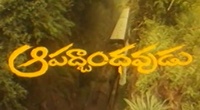
Rahasyam Full HD Movie Download
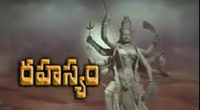
Srimathi Kavali Full HD Movie Download
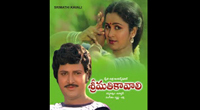
Hyderabad Rowdy Full HD Movie Download

Anand Full HD Movie Download

Lakshadhikari Full HD Movie Download
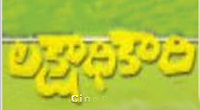
Evarunenu Full HD Movie Download
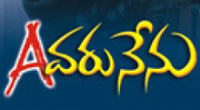
Maha Manishi Full HD Movie Download
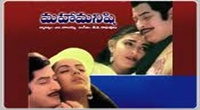
O Manishi Thirigi Choodu Full HD Movie Download
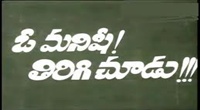
An Evening in Paris Full HD Movie Download
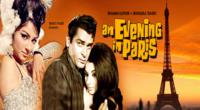
Noorie Full HD Movie Download
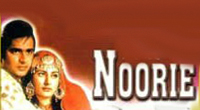
Mere Yaar Ki Shaadi Hai Full HD Movie Download
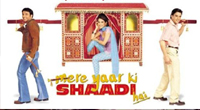

Download latest Movie from bollywood
Request for Download movie Fantasia 1940 Film
- Bollywood movies
- Latest Bollywood movies
- Download all bengali movies
- Download all bhojpuri movies
- Download all english movies
- Download all gujarati movies
- Download all hindi movies
- Download all kannada movies
- Download all malayalam movies
- Download all marathi movies
- Download all oriya movies
- Download all punjabi movies
- Download all tamil movies
- Download all telugu movies
- Bollywood action movies
- Bollywood adventure movies
- Bollywood animation movies
- Bollywood classical movies
- Bollywood comedy movies
- Bollywood crime movies
- Bollywood devotional movies
- Bollywood documentary movies
- Bollywood drama movies
- Bollywood family movies
- Bollywood fantasy movies
- Bollywood historical movies
- Bollywood history movies
- Bollywood horror movies
- Bollywood musical movies
- Bollywood mystery movies
- Bollywood mythological movies
- Bollywood patriotic movies
- Bollywood romance movies
- Bollywood romantic movies
- Bollywood sci-fi movies
- Bollywood social movies
- Bollywood spiritual movies
- Bollywood sports movies
- Bollywood suspense movies
- Bollywood thriller movies
- Bollywood war movies
- Hot actress list
- Hot gujarati actress list
- Hot tamil actress list
- Hot bhojpuri actress list
- Hot assam actress list
- Hot bihari actress list
- Hot jammu and kashmir actress list
- Hot gujarati actress list
- Hot haryana actress list
- Hot konkani actress list
- Hot marathi actress list
- Hot odia actress list
- Hot punjabi actress list
- Hot rajasthani actress list
- Hot kannada actress list
- Hot malayalam actress list
- Hot telugu actress list
- Hot tulu actress list
- Hot Actress list from Indian city
- Hot actress list from ahmedabad
- Hot actress list from alappuzha
- Hot actress list from bangalore
- Hot actress list from bangalore
- Hot actress list from bhopal
- Hot actress list from chandigarh
- Hot actress list from chennai
- Hot actress list from guwahati
- Hot actress list from hyderabad, india
- Hot actress list from indore
- Hot actress list from jaipur
- Hot actress list from kannur
- Hot actress list from kochi
- Hot actress list from kolkata
- Hot actress list from kollam
- Hot actress list from kottayam
- Hot actress list from kozhikode
- Hot actress list from lucknow
- Hot actress list from madurai
- Hot actress list from mangalore
- Hot actress list from mumbai
- Hot actress list from mysore
- Hot actress list from new delhi
- Hot actress list from patna
- Hot actress list from pune
- Hot actress list from thiruvananthapuram
- Hot actress list from thrissur
- Hot actress list from tiruchirappalli
- Hot actress list from vijayawada
- Hot actress list from visakhapatnam
- All Bollywood Movies
- Bollywood Celeb
- >Art Director
- >Audiography
- >Background Music
- >Banner
- >Choreographer
- >Cinematographer
- >Costume Designer
- >Dialogue Writer
- >Director
- >Distributor
- >Editor
- >Executive Producer
- >Hair Stylist
- >Lyricist
- >Music Director
- >Photographer
- >Playback Singers
- >Presenter
- >Producer
- >Production Company
- >Production Designer
- >Screenplay
- >Singer
- >Sound
- >Actor
- >Story Writer
- >Studio
- >Video Director
- >Miscellaneous
- >Publicity (pro)
- >Web Creator
- >Production Labs
- >Publicity Design
- >Publicity Stills
- >Writer
- >Miscellaneous Artists
- >Visual Effects
- >Reporter
- >Music Company
- >Shooting Studios
- >Picturised On
- >Line Producer
- >Co Producer
- >Asst Director
- >Casting Director
- >Cinematography
- >Choreography
- >Dialouge
- >Editing
- >Lyrics
- >Music
- >Story
- >Playback Singer Female
- >Playback Singer Male
- >Actor In A Comic Role (male/female)
- >Child Artiste
- >Ensemble Cast
- >Actor Popular Choice (male)
- >Actor Popular Choice (female)
- >Sa Re Ga Ma Pa Song Of The Year
- >Actor In Supporting Role
- >Actress In Supporting Role
- >Actor In Leading Role
- >Art Direction
- >Actress In Leading Role
- >Sound Recording
- >Costume Design
- >Special Effects
- >Action
- >Actor In A Negative Role
- >Lifetime Achievement Award
- >Cinematic Exellence (director)
- >Cinematic Exellence (male)
- >Cinematic Exellence (female)
- >International Male Icon
- >International Female Icon
- >Actor In A Supporting Role (male)
- >Actor In A Supporting Role (female)
- >Actor In A Comic Role
- >Playback Singer (male)
- >Playback Singer (female)
- >Most Promising Debut (female)
- >Most Promising Debut (male)
- >Most Promising Director
- >Sound Design
- >Lifetime Jodi
- >Marketed Film
- >Jury Award For Best Actor
- >Jury Award For Best Actress
- >Jury Award For Best Film
- >Jury Award For Best Director
- >Playback Singer(male)
- >Lifetime Acheivement Award (male)
- >Excellence Award
- >Jodi Award
- >Performer Of The Year
- >Presented By
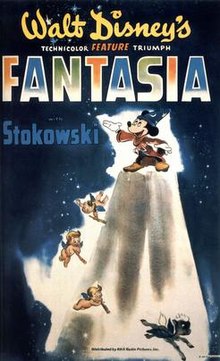 Story of movie Fantasia 1940 Film :
Story of movie Fantasia 1940 Film :